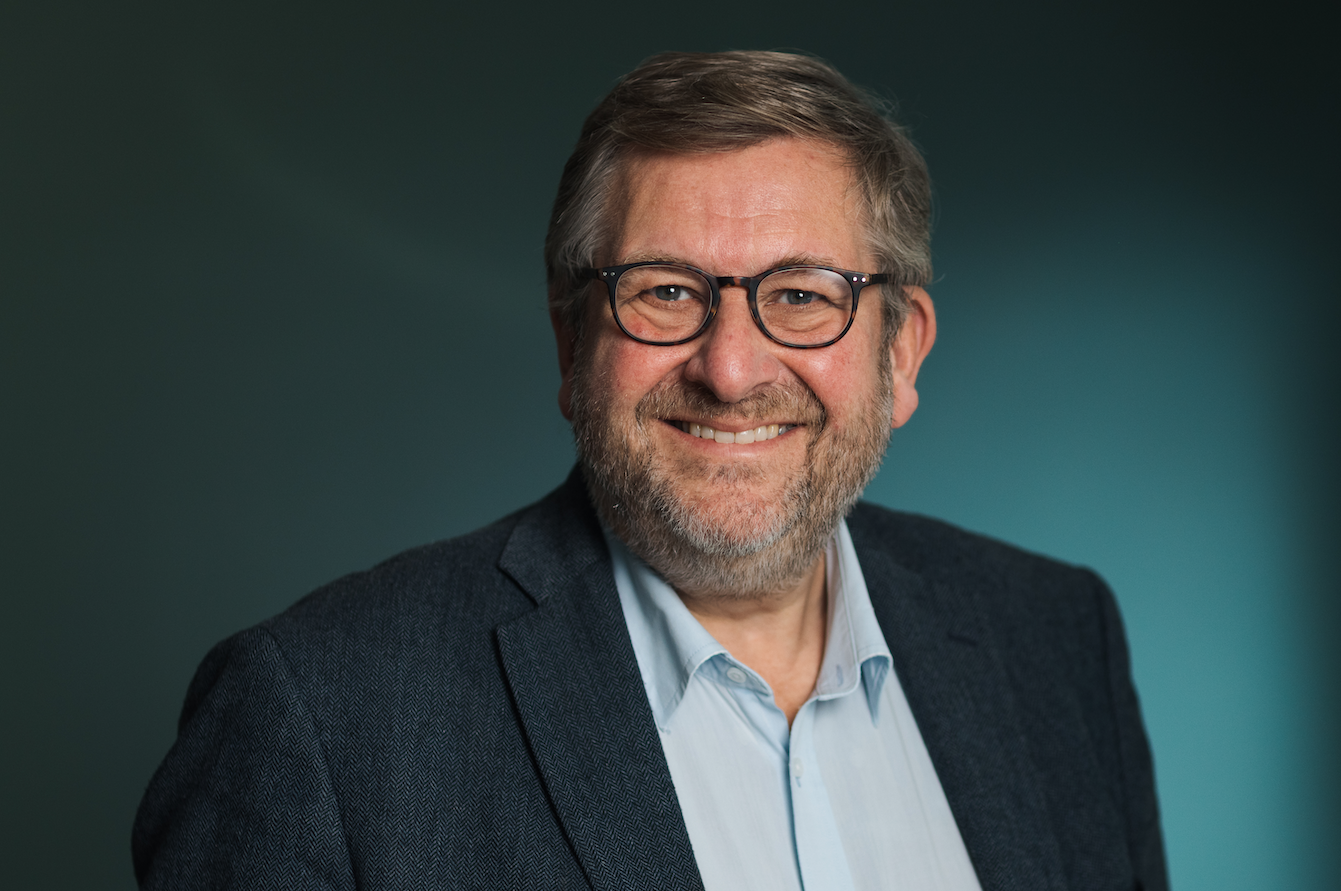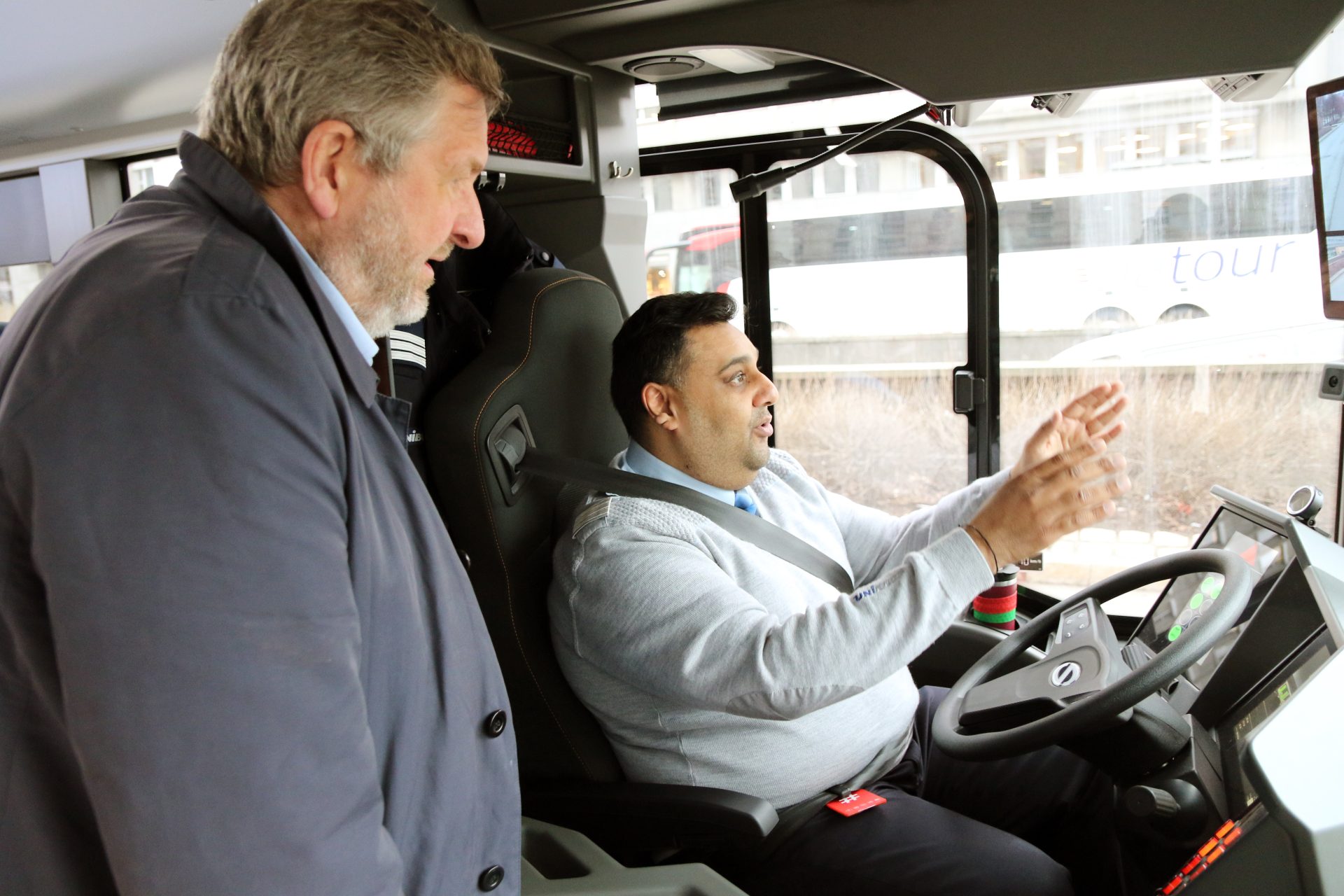We have a long history of public transport, where we have been ambitious from the start. In 1894, what was then called Kristiania got Northern Europe’s first electric tram. Our small capital, far to the north, already had a world-class public transport system.
It is a legacy we should be proud of. It is with the same drive and ambition that we have achieved today’s public transport system – which aims to be world-leading. In regularity, in customer interface, and in sustainability.
Striving towards this goal, 2023 has been an unparalleled milestone: This year, we laid the final pieces that will soon make Oslo the world’s first capital with emission-free public transport. The contracts that will complete the electric revolution in the capital are now signed. New contracts were also put in place in Akershus, bringing us closer to the zero-emission goal.
The Big Picture
It is important, because the big picture is that there is an urgent need to reduce climate emissions. In 2021, the UN Secretary-General issued a «code red» signal when the UN Climate Panel presented its report. The 1.5-degree target is failing. The green transition is going too slowly. «This report must be a death knell for fossil fuels,» said António Guterres. We at Ruter take this very seriously. Because everyone has to contribute. Everyone.
Through broad political consensus, Ruter has been tasked with delivering on a zero-emission vision for the operation of public transport. This has required systematic work over time. We have proceeded with the same ambitious drive for action that has characterized public transport in Oslo and Akershus from the very beginning.
There is still a long way to go to reach the goal – but in 2023 we can proudly present historically good results for emission reductions:
Reductions in 2023:
It is the phasing in of many new electric buses that has led to the major leaps towards emission-free public transport in 2023. At the start of 2024, 80% of city buses in Oslo were electric, and the rest will follow during the year. Ruter’s ambition is that all buses, boats, trams, and subways in our region will be emission-free in operation.
The way we have managed to do this, is by using the «Ruter Model» – our unique procurement model. We use the procurement of transport services to help mature and shift markets.
We announced that we required operations to be emission-free, but we let the market find the solution. That solution has been electricity. We continued to push developments forward by setting increasingly tough requirements. This interaction is the very core of how we have managed to give fossil fuels the «death knell» that the UN Secretary-General calls for.
Winter Operations
As I write this, the calendar shows April 2024, and outside my window, snowflakes are still flying – hopefully for the last time this season. It’s impossible to summarize 2023 without commenting on the winter season of 2023-2024. It was a tough winter, where public transport was truly put to the test. There is no doubt that travelers did not get the service they should have when it was at its worst.
We must acknowledge that in the future we must be able to deliver a predictable public transport service even when weather and road conditions become increasingly demanding – something the past winter gave us a glimpse of. This is a shared challenge that we must address. It demands more from all of us. We at Ruter are doing what we can to learn as much as possible from this winter, so that together with the operators we can avoid the same problems next winter. At the same time, we must also look at what demands this places on equipment, road maintenance, and information to travelers.
This winter has also shown that customers have high expectations of us. Expectations that Ruter has answers and that we can fix things. I take that as a vote of confidence, and we will do our best to deliver on that – without compromising on our sustainability promise.
The 2023 Sustainability Index (Sustainable Brand Index Norway) (Sustainable Brand Index Norway) tells us something about which companies people believe are sustainable. Among the top ten, we find Ruter, Vy, and Flytoget. It is a signal that people see the sustainability in traveling together when they can, alone only when they must – emission-free. Therefore, we do not waver in our belief that emission-free public transport, as soon as possible, is the only way forward. Even if pushing boundaries comes with its challenges.
More People Switching from Private Cars
We are making good progress by ensuring that those who already travel by public transport can actually travel with emission-free vehicles. But if Oslo and Akershus are to succeed in cutting even more emissions, preserving nature, and securing space for a good urban life, we need to get more travelers to switch from their own cars to other modes of travel.
If we want people to travel together when they can, and alone only when they must, then the service we provide must be the best possible. At Ruter, we are working purposefully to improve the service from several angles:
- We invest in and strengthen the existing public transport service.
- We develop new modes of travel for the future that are more adapted to the needs of each individual customer.
- We work to include everyone in the public transport service, among other things by making stops and vehicles more accessible.
- We are constantly developing the Ruter app, our most important tool for delivering what customers need.
More and More People Travel by Public Transport
Since Ruter was established in 2008, the increase in passenger numbers in Oslo and Akershus has been far greater than population growth would suggest. During the pandemic, passenger numbers plummeted. Maintaining a robust public transport service made it easier for customers to return when the pandemic was over.
passenger growth in both Oslo and Akershus compared to 2022.
Data-Driven Public Transport
One of the things that has changed the most in the years Ruter has existed is that we now have completely different conditions for using data. The amount of data generated provides opportunities for those who can acquire data, analyze the patterns, and utilize the insights. Ruter does this every day. And we are going to become even better at it.
In 2023, Ruter started the process of separating out a new company, with a start date of January 1st, 2024: Tet Digital As. The goal is to create a leading development environment, with the freedom to work quickly and efficiently to develop the services that public transport needs. And not least: The services developed will be for other Norwegian public transport companies. We believe that the competitiveness of public transport depends on the digital interfaces and that the products maintain the same high level throughout the country.
Data-driven public transport opens up great opportunities. Today, data streams allow you to track the real-time position of the tram, estimate how full the subway is at a given time, and find out how many electric scooters are available at the stop where you are getting off.
In the future, the public transport service can be expanded with transport services that pick you up where you are, in vehicles that drive autonomously. We will expand the public transport network so that it becomes easier to get to wherever you are going, and we will make the public transport network more finely meshed so that we ensure good services where we currently operate too sparsely. We must make sure to do this in a way that still promotes green modes of transport.
The vehicles’ position and route selection will be based on data and continuously re-planned to choose the most efficient route when new bookings come in. Your digital interaction with public transport will become even more intuitive and simple. This is an incredibly exciting development, where we at Ruter aim to be at the forefront.
The results in 2023 provide a good starting point for further developing the service:
Maximum Public Transport for the Money
Mass transit in 2023 is essentially about the same thing as in 1894 – moving people from where they are to where they need to go. But with far greater ambitions.
At Ruter, we are committed to ensuring that everyone can travel easily across Oslo and Akershus, regardless of their financial situation or functional level. People should be able to reach their destination within a reasonable time and without depleting natural resources or harming the climate. And not least: We must use community resources wisely – and deliver the most public transport possible for the money.
Transport purchases and development of the transport service account for 98% of Ruter's operating costs. This means that the costs are largely about offering travelers a good public transport service.
Source: Oslo Economics, 2023 (period 2018–2022)
Ruter's cost savings from the purchase of scheduled public transport in the period 2018-2022.
Source: Oslo Economics, 2023
Public transport connects us
Public transport has developed hand in hand with the growth of the region. The suburban railways have made Oslo a bigger city. The regional buses connect the region more closely every day, from the outermost parts of Asker to the innermost parts of Minnesund.
Every day, people travel from where they live to where they need to go – whether it’s to school, work, or to the library to meet at the Thursday club. A good public transport service that is accessible to everyone is the key to a good society where everyone can participate on an equal footing. It is a responsibility that all of us at Ruter feel, and it gives us the motivation to perform a little more – every day!
Ruter for 15 Years
Ruter AS was established in 2008 and is a company for administrating public transport in Oslo and Akershus. The company is wholly owned by the City of Oslo (60%) and Akershus County Municipality (40%). Ruter develops, plans, coordinates, orders, and markets the public transport service.

